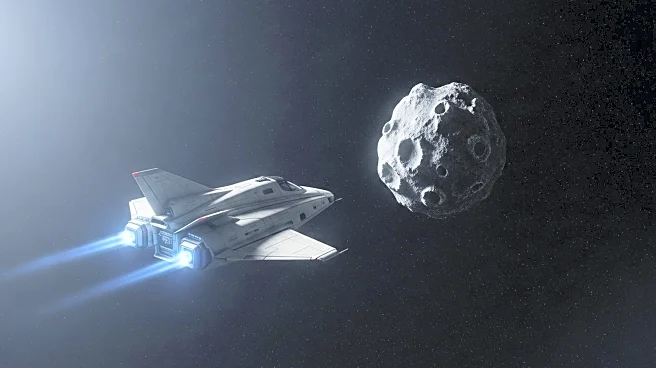What is the story about?
What's Happening?
Japan's Hayabusa2 spacecraft is set to explore asteroid 1998 KY26, which has been revealed to be only 11 meters wide, making it the smallest object ever targeted by a spacecraft. The asteroid's rapid rotation, completing a spin every five minutes, presents unique challenges for the mission. The study of KY26 could inform future asteroid mining and enhance planetary defense strategies. The mission marks a significant advancement in space technology, highlighting the potential for exploring small celestial bodies.
Why It's Important?
The exploration of asteroid 1998 KY26 offers a unique opportunity to study small celestial bodies, which are typically difficult to observe in detail. Understanding the composition and behavior of such asteroids could have implications for future space exploration, including asteroid mining and planetary defense. The mission demonstrates advancements in space technology and observational techniques, paving the way for more detailed studies of small objects in the solar system. Insights gained from KY26 could help assess potential threats from similar-sized asteroids.
What's Next?
The Hayabusa2 mission will require extraordinary precision due to the asteroid's small size and rapid rotation. Future observations may provide insights into the asteroid's composition, potentially revealing whether it is a solid rock or a loosely bound rubble pile. The mission's success could influence future exploration efforts and strategies for resource extraction from asteroids.
Beyond the Headlines
The ability to characterize small asteroids has broader implications for space exploration and defense strategies. Understanding these objects is crucial for assessing potential threats and developing protective measures. The mission highlights the importance of international collaboration and technological advancements in space research.
AI Generated Content
Do you find this article useful?














